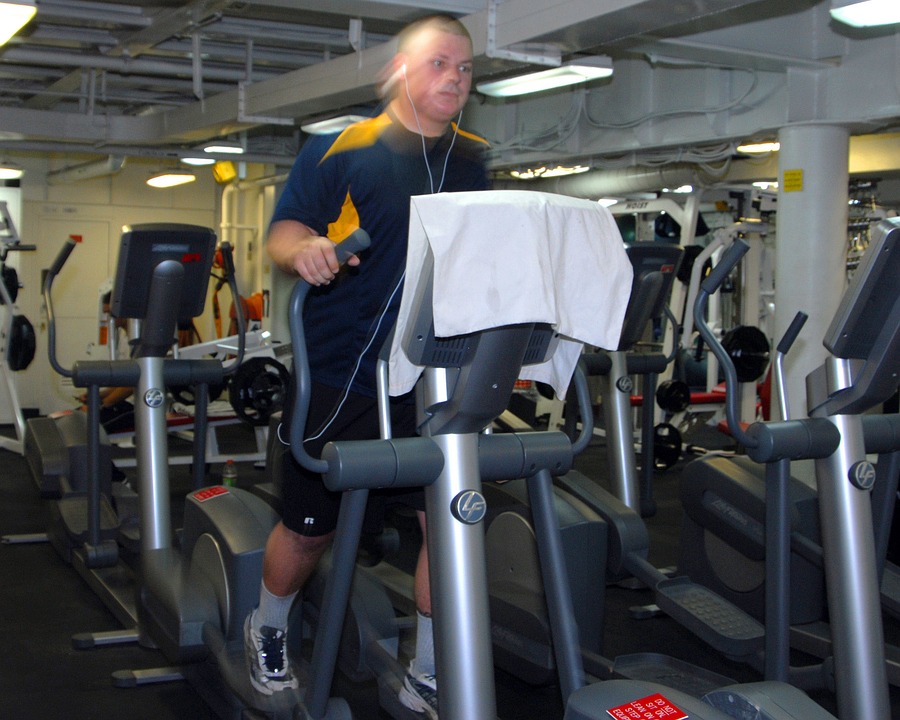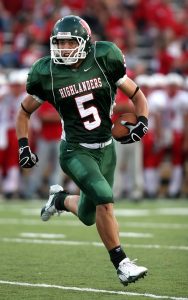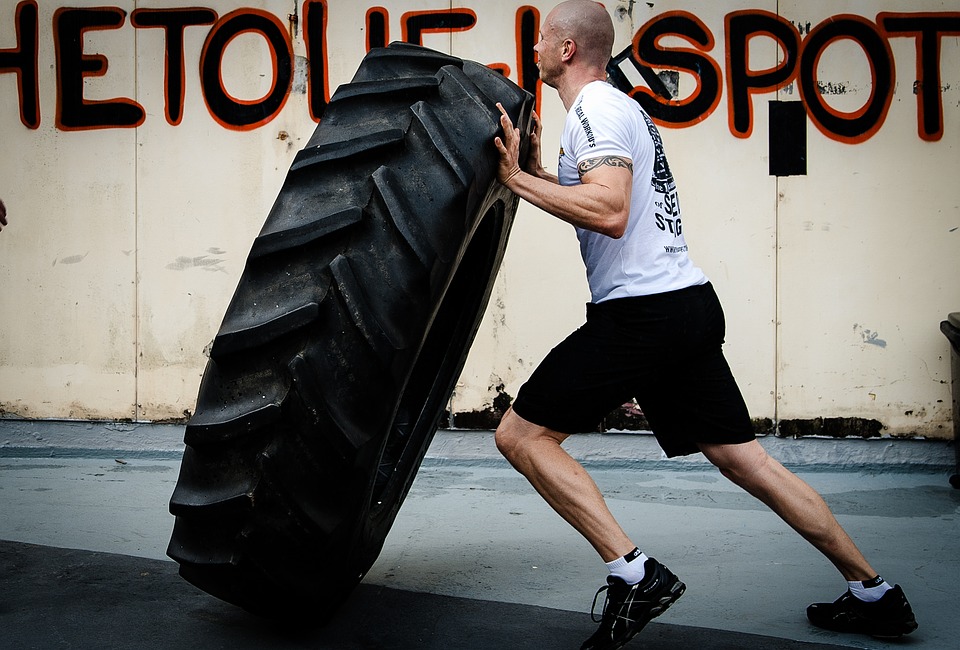
Whereas a warming-up is drilled in from the start of your athletic career a cooling down is not as common. Ending your training or match with low intensity jogging or cycling is often suggested but not often executed. In this article I will focus on the effect of active recovery, which is normally the core of a cooling down (although stretching or breathing exercises are also common).
I will try to answer the following questions:
- What is active recovery?
- Will it improve lactic acid clearance?
- Will it improve recovery of strength?
- Will it reduce delayed onset muscle soreness (DOMS)?
What is active recovery?
Active recovery is often described as an endurance session at low intensity after a workout with a duration of 10-20min. To be more precise: it is aerobic endurance training, meaning that it uses oxygen to produce energy. The rule of thumb is that you should be able to have a conversation while doing it.
The goal of active recovery is to restore the before training climate inside the muscles think of: pH, lactic acid, glycogen and cells marking muscle damage and inflammation. That’s why aerobic endurance training is appropriate because it doesn’t produce the metabolic waste products associated with anaerobic endurance training (like lactic acid).
Active recovery is often described as an endurance session at low intensity after a workout with a duration of 10-20min

Will it reduce lactic acid?
Yes lots of studies show the positive effect of active recovery for clearing out lactic acid [3,5,6,7,8,9,10,11,16,17,18]. Furthermore, active recovery is more efficient in doing so compared to other recovery tools like Recovery boots, Electrical muscle stimulation (EMS) or Cold water immersions (CWI).
The clearance of lactic acid is important for restoring the before training climate. Lactic acid is produced during anaerobic training and is the reason why you feel that burning sensation inside your muscles. During anaerobic training your body is literally short of breath, meaning that the demand of oxygen is bigger than the supply. Or the demand of energy is bigger than the capacity of producing energy with the use of oxygen. This causes the body to make energy without the use of oxygen, this is faster than with oxygen but comes with a price: it is less efficient and it produces lactic acid.
Yes lots of studies show the positive effect of active recovery for clearing out lactic acid [3,5,6,7,8,9,10,11,16,17,18]. Furthermore, active recovery is more efficient in doing so compared to other recovery tools like Recovery boots, Electrical muscle stimulation (EMS) or Cold water immersions (CWI).
Scientists told for years that lactic acid was the main cause of muscle soreness, but this has been rejected. Although it is accountable for the burning sensation during and directly after a workout, scientist now say that is does not elevate muscle soreness. The lactic acid produced during training is lowered during rest, and is back to normal after a good night sleep but if you want to speed it up than active recovery is definitely the way to go.
The most efficient way to reduce lactic acid is by an active recovery consisting of an aerobic endurance training at reasonably high intensity. Meaning that the intensity is close to the point that your body starts producing energy anaerobic, this is called the anaerobic threshold and is different for every athlete. For a trained athlete it is between 70-85% of your maximal heart rate (which can be easily calculated with a heart rate monitor).
Will it improve recovery of strength?

The first and second day after a heavy training your muscles cannot produces as much power compared to before a heavy training. This is one of the negative after effects of training, and is mostly caused by muscle damage and the body’s protective mechanism. Within 48-72 hours the strength restores and you are ready for the next heavy training.
But does an active recovery session after the workout speed up strength recovery?
Maybe, there is not much scientific evidence.
A study done by Ezequiel Rey [15] looked at the effect of an active recovery after a soccer training. They saw that the players who performed an active recovery after the training produced a significantly greater Counter Movement Jump (CMJ) 24 hours later. Studies done by Chen [13] and Strejcová [14] show a faster recovery of strength as well.
But there are also studies who contradict this [4,5].
Will it reduce delayed onset muscle soreness?
Unfortunately there are not much studies done regarding the effect of active recovery on muscle soreness. The three studies I found all failed to show improvements of delayed onset muscle soreness (DOMS) [4,19,20].
This furthermore endorses the idea that lactic acid is not accountable for delayed onset muscle soreness, because we saw that active recovery is by far the best way to reduce lactic acid.
But active recovery does reduce the burning sensation often experienced during and directly after a heavy workout.
The three studies I found all failed to show improvements of delayed onset muscle soreness

Concluding
Active recovery is successful in:
- Clearing out lactic acid and the burning sensation in the muscles that comes with it.
Active recovery is likely to be successful in:
- Attenuate strength loss the days after a heavy training.
Active recovery is not successful in:
- Reducing delayed onset muscle soreness.
An active recovery session of 10-20min at moderate intensity (around 70% heart rate maximum) is most effective.
Remember, the best way to recover is a combination of a few recovery tools. There is not one recovery modality that will be successful for all the negative after effects you want to address (muscle soreness, strength loss, stiffness etc).
I think that active recovery should be part of your after workout session, but it’s not the holy grail you should combine it with other interventions (read more HERE).
Active recovery references
- Active Recovery and Electro-Muscular Stimulation on Delayed Onset Muscle Soreness after Endurance Running: A Randomized Clinical Trial
- No Differences Between Alter G-Trainer And Active And Passive Recovery Strategies On Isokinetic Strength, Systemic Oxidative Stress And Perceived Muscle Soreness After Exercise-Induced Muscle Damage.
- Effects of active recovery on plasma lactate and anaerobic power following repeated intensive exercise
- Neuromuscular fatigue and recovery in elite female soccer: effects of active recovery
- Effects of active and passive recovery on lactate removal and subsequent isokinetic muscle function.
- Comparative Study of Lactate Removal in Short Term Massage of Extremities, Active Recovery and a Passive Recovery Period After Supramaximal Exercise Sessions
- The Comparative Effects of Sports Massage, Active Recovery, and Rest in Promoting Blood Lactate Clearance After Supramaximal Leg Exercise
- Glycogen Synthesis in Muscle Fibers during Active Recovery from Intense Exercise
- Lactate removal during active recovery related to the individual anaerobic and ventilatory thresholds in soccer players
- Lactate kinetics during passive and partially active recovery in endurance and sprint athletes
- Blood lactate clearance during active recovery after an intense running bout depends on the intensity of the active recovery
- Effects of active recovery under a decreasing work load following intense muscular exercise on intramuscular energy metabolism.
- EFFECTS OF IMMOBILIZATION AND ACTIVE MOBILIZATION ON RECOVERY OF MUSCLE AFTER ECCENTRIC EXERCISE
- THE EFFECT OF ACTIVE RECOVERY, COLD WATER IMMERSION AND PASSIVE RECOVERY ON SUBSEQUENT KNEE EXTENSION AND FLEXION STRENGTH
- The Effect of Immediate Post-Training Active and Passive Recovery Interventions on Anaerobic Performance and Lower Limb Flexibility in Professional Soccer Players
- The effect of high intensity anaerobic training on the blood lactate levels after active recovery
- The rate of lactate removal after maximal exercise: the effect of intensity during active recovery.
- EFFECT OF PASSIVE AND ACTIVE RECOVERY ON THE RESYNTHESIS OF MUSCLE GLYCOGEN
- The relative efficacy of three recovery modalities after professional rugby league matches.
- The effect of recovery strategies on contractile properties using tensiomyography and perceived muscle soreness in professional soccer players.
